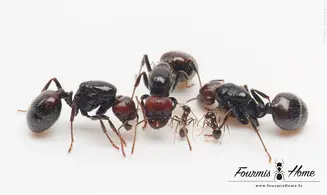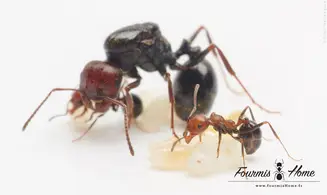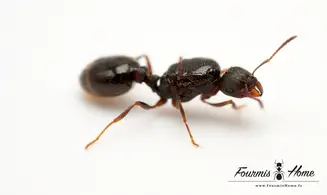Latin name: Myrmica rubra
Taxonomy: Subfamily: Myrmicinae Tribes: Myrmicini
Breeding level: Beginner
Geographical distribution: Great Britain to Central Asia, from Scandinavia to the Black Sea, introduced to North America since the beginning of European colonization
Habitat: Prefers wet and temperate meadows, pastures, open woods, avoids areas with low vegetation.
Colony shape: Extremely polygynous
Queen: Size: 5 - 7.5mm Color: Dark red, dark chest more than for the workers
Workers: Size: 7 - 9mm Color: Dark red to dark orange, gastre a little darker and shiny
Major: No
Male: Size: 9mm Color: Black
Food: Honeydew, but also a lot of small insects like mealworms, fly, mosquito, crickets etc ...
Humidity: Hunting area: 30 - 50% Nest: 50 - 70%
Temperature: Hunting area: 18 - 28 ° C Nest: 21 - 24 ° C
Hibernation: Yes, from mid-November to early March between 12 and 15 ° C
Nest type: Plexiglas nest, nest with tubes, reconstituted stone nest.
Description: Myrmica rubra has a pronounced queen polymorphism in which a distinction is made between microgynes and macrogynes, they are very good hunters, it is the only endemic species of France which is equipped with a sting which makes it a real very good hunter. The sting is not very painful.
Development: Swarming from mid-August to the end of September.
Foundation: Semi-claustral (with food) Development: 45 days from egg to worker (depending on temperature)
Size of the colony: Up to 20,000 individuals, the queen can reach the age of 12 years.















